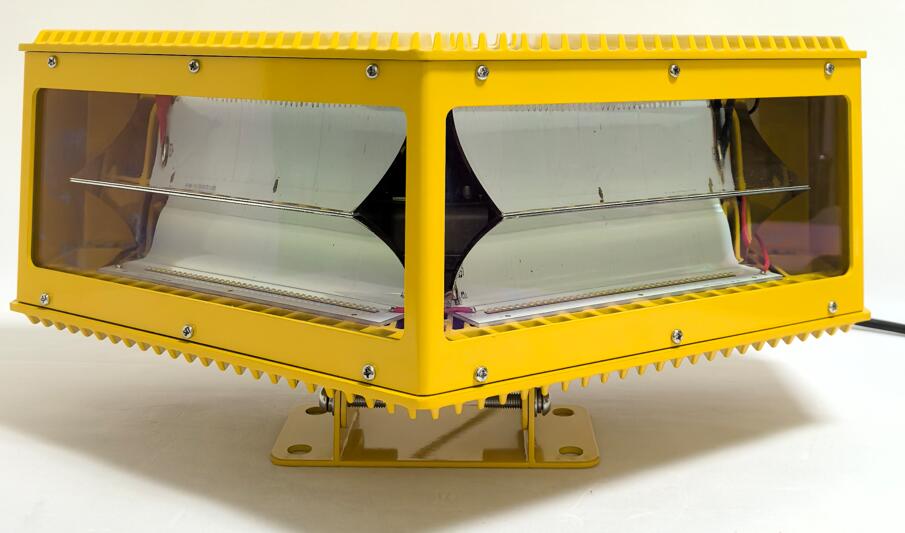FAA Obstruction Lighting: Safeguarding the National Airspace System
The Federal Aviation Administration (FAA) plays a critical role in ensuring aviation safety across the United States. One of its key responsibilities is regulating FAA obstruction lighting systems, which help pilots identify and avoid potential hazards in the national airspace. As structures continue to grow taller—from skyscrapers to wind turbines—proper obstruction lighting has never been more important. This article explores FAA standards, lighting types, technological advancements, and compliance best practices.
Why FAA Obstruction Lighting Matters
The U.S. airspace is among the busiest in the world, with thousands of flights daily. Obstructions such as communication towers, buildings, and wind farms pose significant risks if not properly marked. FAA obstruction lighting serves three primary purposes:
Preventing Mid-Air Collisions – Ensures pilots can detect tall structures, especially at night or in poor visibility.

Regulatory Compliance – The FAA mandates lighting for structures exceeding certain heights.
| faa obstruction lighting system |
Supporting Low-Altitude Operations – Helicopters, crop dusters, and emergency aircraft rely on obstruction lights for safe navigation.
Without these systems, structures could become invisible hazards, leading to catastrophic accidents.
FAA Obstruction Lighting Standards
The FAA categorizes obstruction lighting based on structure height and location. Key regulations are outlined in FAA Advisory Circular 70/7460-1L, which defines:
| faa obstruction lighting |
1. Lighting Intensity Levels
Low-Intensity (L-810) – For structures under 150 ft (46 m). Typically steady red lights.
Medium-Intensity (L-864 & L-865) – For structures between 150–500 ft (46–152 m). Can be red or white flashing lights.
High-Intensity (L-856) – For structures over 500 ft (152 m) or near airports. Bright white strobes.
2. Lighting Configurations
Red Obstruction Lights – Used at night for all heights.
White Strobe Lights – Required for daytime visibility on tall structures.
Dual Lighting Systems – Combine red and white lights for 24/7 visibility.
3. Placement & Spacing Requirements
Lights must be spaced evenly along the structure.
Top and mid-level lights are mandatory for very tall obstructions.
Backup power is required to prevent light failure.
Technological Innovations in FAA Obstruction Lighting
Recent advancements have improved the efficiency and reliability of FAA obstruction lighting:
LED Technology – Longer lifespan, lower energy consumption, and brighter illumination than incandescent bulbs.
Aircraft Detection Lighting Systems (ADLS) – Lights activate only when an aircraft is nearby, reducing light pollution.
Solar-Powered Options – Ideal for remote locations without reliable grid power.
Smart Monitoring Systems – Remote diagnostics alert maintenance teams to malfunctions.
These innovations help balance safety, sustainability, and operational efficiency.
Compliance Challenges & Best Practices
While FAA obstruction lighting regulations are clear, compliance can present challenges:
Common Issues
Light Pollution Complaints – Nearby residents may object to flashing lights. ADLS helps mitigate this.
Maintenance Difficulties – Offshore wind farms and remote towers require specialized servicing.
Weather Resistance – Lights must endure extreme conditions, from hurricanes to ice storms.
Best Practices for Compliance
Conduct Regular Inspections – Ensure lights are functional and meet FAA standards.
Use ADLS Where Possible – Reduces community complaints while maintaining safety.
Invest in Durable Lighting – Corrosion-resistant materials extend lifespan in harsh environments.
Stay Updated on FAA Revisions – Regulations evolve; compliance teams must monitor changes.
Future of FAA Obstruction Lighting
As urban expansion and renewable energy projects increase, the demand for effective FAA obstruction lighting will grow. Emerging trends include:
AI & Predictive Maintenance – Machine learning could predict failures before they occur.
Enhanced Light Control Systems – Smarter activation based on real-time air traffic.
Eco-Friendly Designs – More solar and low-energy lighting solutions.
The FAA will likely continue refining standards to adapt to new technologies and airspace demands.
FAA obstruction lighting is a cornerstone of U.S. aviation safety, ensuring that tall structures do not endanger aircraft. By adhering to FAA regulations, leveraging new technologies, and implementing best practices, stakeholders can maintain compliance while enhancing safety. As infrastructure grows taller and air traffic increases, these lighting systems will remain essential in protecting both pilots and the public.
